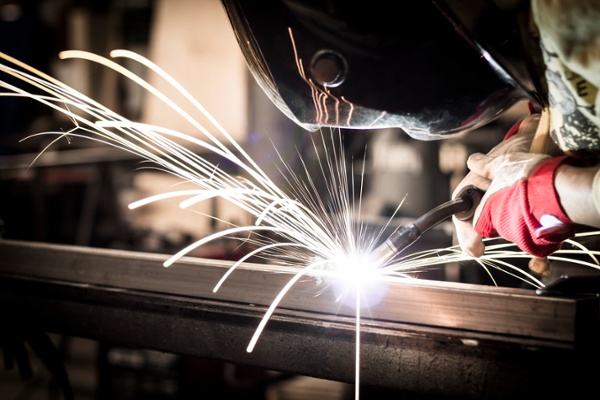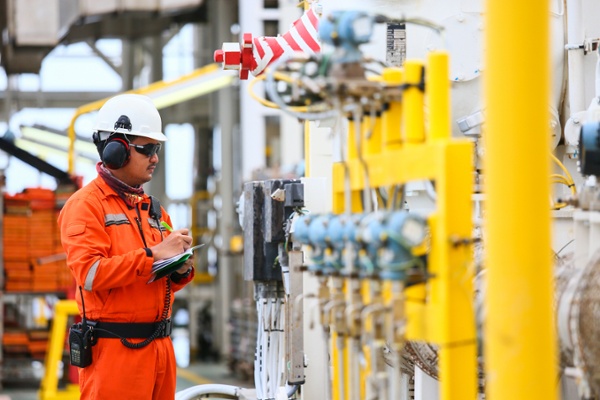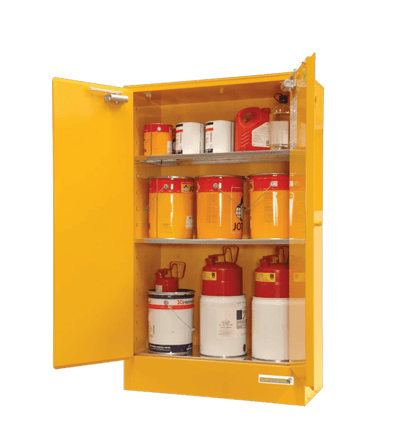Flammable liquid fires can quickly become catastrophic events. They can result in fatalities and the devastation of businesses, the community and natural environment. To raise awareness about the importance of flammable liquids safety, we’ll be highlighting 5 real-world incidents of chemical fires. We’ll detail how these horrific accidents have occurred — and suggest 5 ways that you can help reduce the risk of fires, explosions and dangerous incidents in your own workplace.
1. Conducting Pre-Operational Checks
A worker was spraying a flammable paint primer under a gas water heater to kill mould and bacteria. The worker failed to shut off the pilot light on the gas heater before spraying, and the flame ignited the paint causing a flashback. The worker was hospitalised with burns to the face, neck and upper body.
Incidences such as this can be avoided if your business develops clear work procedures for staff who are handling and storing Class 3 Flammable Liquids.
You should create clear work procedures, including pre-operational safety checks, for all tasks that involves the use of flammable liquids.

One of the most crucial safety measures that staff handling flammable liquids must be aware of, is how to correctly identify and eliminate an ignition source from their work area.
These work procedures and safety checks should include (as a minimum):
- Clearing the area of potential ignition sources.
- Shutting down gas and electrical appliances that have thermostats and pilot lights.
- Ensuring proper ventilation.
- Using correct PPE and safety equipment.
2. Carrying Out Preventative Maintenance
While a worker was adjusting the flow of fuel in between two strainers, pressurised oil began to leak from a boiler. Oil sprayed across the room and covered a wall — as well as the worker. The oil ignited and the worker suffered second degree burns and was hospitalised. Another worker (uninjured) was trapped at height and had to be rescued by Fire Services using a ladder. An investigation found that the equipment regularly leaked oil.
As this incident has proven, ignoring maintenance issues with your machinery and equipment can result in serious accidents when flammable liquids are involved.
Apart from regularly checking the integrity and functionality of your production equipment, you should also be checking, clearing and repairing equipment.
Develop an inspection and maintenance checklist for:
- Vents and air ducts - a build-up of dust and debris in these areas can ignite.
- Lubrication - insufficient lubrication can create friction, heat and sparks.
- Oil and liquid sumps - don’t allow flammable waste to accumulate.
- Belts, filters, seals, gaskets - worn parts and consumables can create friction and equipment malfunctions.
- Calibration - uncalibrated machinery can overheat or malfunction.
- Electrical connections - faulty connections and discharge and spark.

By scheduling preventative maintenance on plant and machinery, you can reduce the risk of fire, explosion and human harm.
3. Training Workers To Understand Hazards
A diesel mechanic was cleaning a metal workbench with liquid alcohol and a rag. The alcohol was sitting on the bench in a plastic container with the lid off. A torch fell off the bench and sparked. This ignited the alcohol vapours on the bench and inside the container. The worker was burned and hospitalised for 12 days — they had not received any training in chemical usage and safety.
Train your workers so they know how to use chemicals safely and understand how the materials and substances stored nearby can cause flammable liquids to burn, explode or react dangerously. Your training and induction program should include:
- Fire and explosion risks associated with the chemical's workers handle during their daily work tasks.
- What causes a chemical to ignite, burn, or explode.
- Specific examples of ignition sources.
- Proper Housekeeping procedures (eg, keeping chemical containers inside a safety cabinet with the lids in place).
- Personal equipment, materials and substances that are banned from work areas.
4. Segregating Chemicals
A worker was cleaning implements and componentry with toluene. Working in an enclosed mixing room, the worker began transferring toluene from a drum into 2 x smaller plastic containers. Next to the toluene was an (almost) empty drum of methyl isobutyl ketone. An ignition occurred near the toluene (still unsure how it happened) and a flashback travelled toward the methyl isobutyl ketone which exploded. The worker suffered burns to more than 90% of their body and died 11 days later in hospital.
This terrible accident could have been avoided if hazardous chemicals were correctly segregated.
You should always refer to Safety Data Sheets and employ proper chemical segregation in all chemical mixing, handling and storage areas.
 Chemical segregation and compliant storage is crucial to maintaining and safe and compliant workplace.
Chemical segregation and compliant storage is crucial to maintaining and safe and compliant workplace.
In your own workplace, make sure that you:
- Carry out a risk assessment on all highly flammable liquids at the worksite.
- Segregate Dangerous Goods according to Australian Standards and the ADG Code.
- Even in the mixing room, keep high risk flammables in a dedicated flammable liquids cabinet.
- Clearly label chemical containers and remove empty drums/containers without delay.
5. Using A Flammable Liquids Cabinet
A worker was carrying out some welding when a spark flew into an open jerry can of fuel. The vapours immediately ignited, and the worker was burned in the fire. They required hospitalisation.
Fuel is an extremely volatile substance with low flash point. This means that it can easily ignite at room temperature.
To avoid an incident such as the one described above, you must ensure that lids are always kept on chemical containers. If chemical containers aren’t being used, they should be immediately put away in a compliant Class 3 Flammable Liquids cabinet. The cabinet will provide a range of risk control measures for your chemicals including vapour containment, spill and leak containment and fire prevention.
In addition to keeping chemical containers closed and storing your flammable liquids correctly, your business should implement safe work procedures.
Procedures should include instructions for staff members or contractors carrying out maintenance involving hot work, to first check the area for flammable and combustible items.
It’s also important to develop and sustain good housekeeping procedures, to ensure all work areas are properly cleaned, maintained and organised.
Some good housekeeping procedures may include:
- Replacing leaking and damaged chemical containers.
- Wiping down chemical containers before putting into the cabinet.
- Never allowing welding and other hot work near any type of flammable chemicals (or the flammable liquids cabinet).
How Can You Reduce Risk In Your Organisation?
Are you ready to step-up flammable liquids safety in your business? Then we encourage you to download our eBook Essential Considerations When Storing Flammable Liquids Indoors. Our helpful guide details the critical fire and explosion hazards created by Class 3 Flammable Liquids — and how you can effectively reduce risk. Don't miss out. Get your free copy today to learn more about flammable liquids safety.
Joining the team as a Dangerous Goods Storage Consultant, Melissa Hampton became Storemasta's Marketing Manager in late 2021. With extensive knowledge and experience in chemical compliance, Melissa is responsible for leading the Marketing team and helping shape their marketing strategy. In her spare time, you can find Melissa hiking, swimming and enjoying the great outdoors in beautiful north-west Tasmania.
